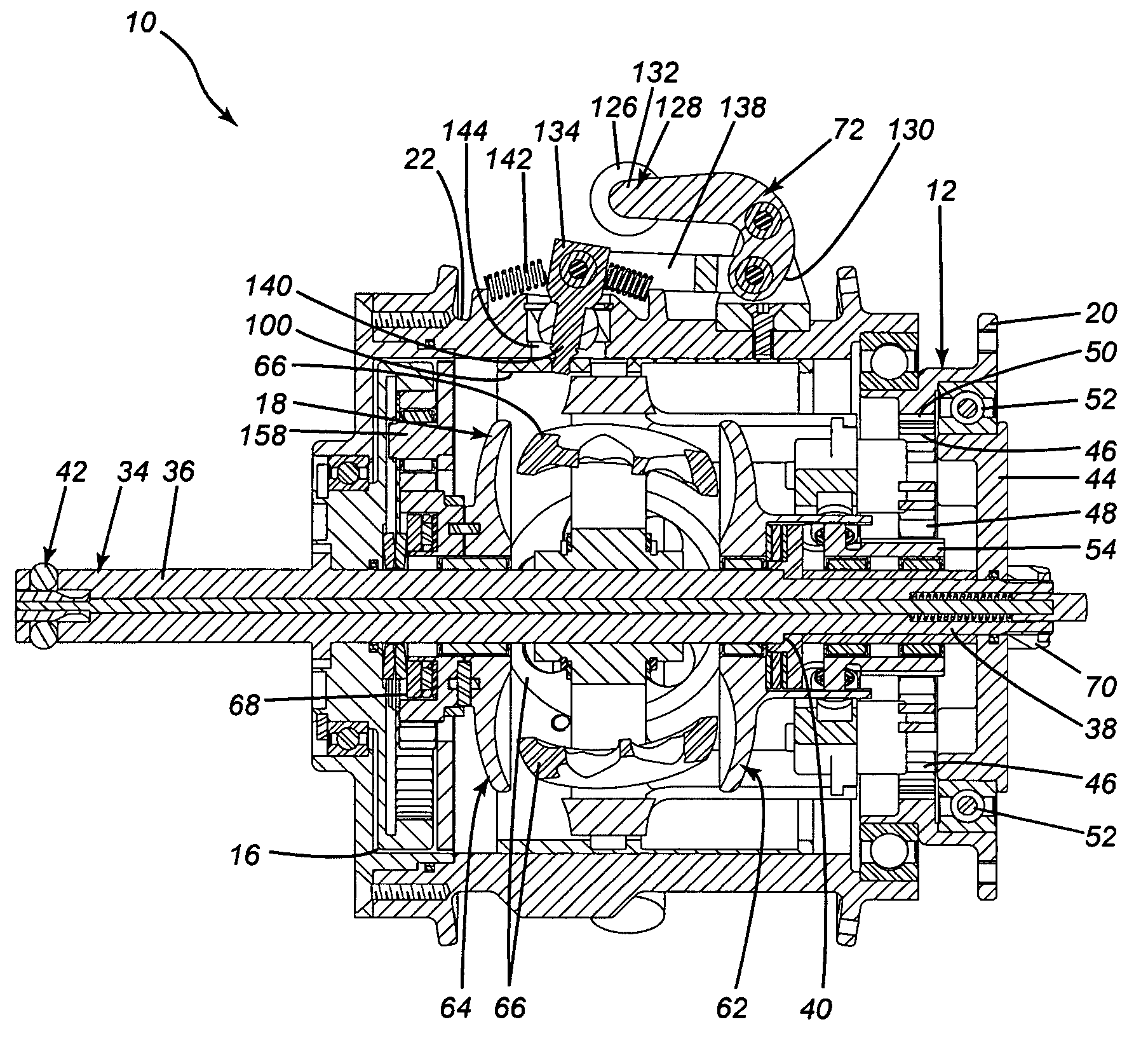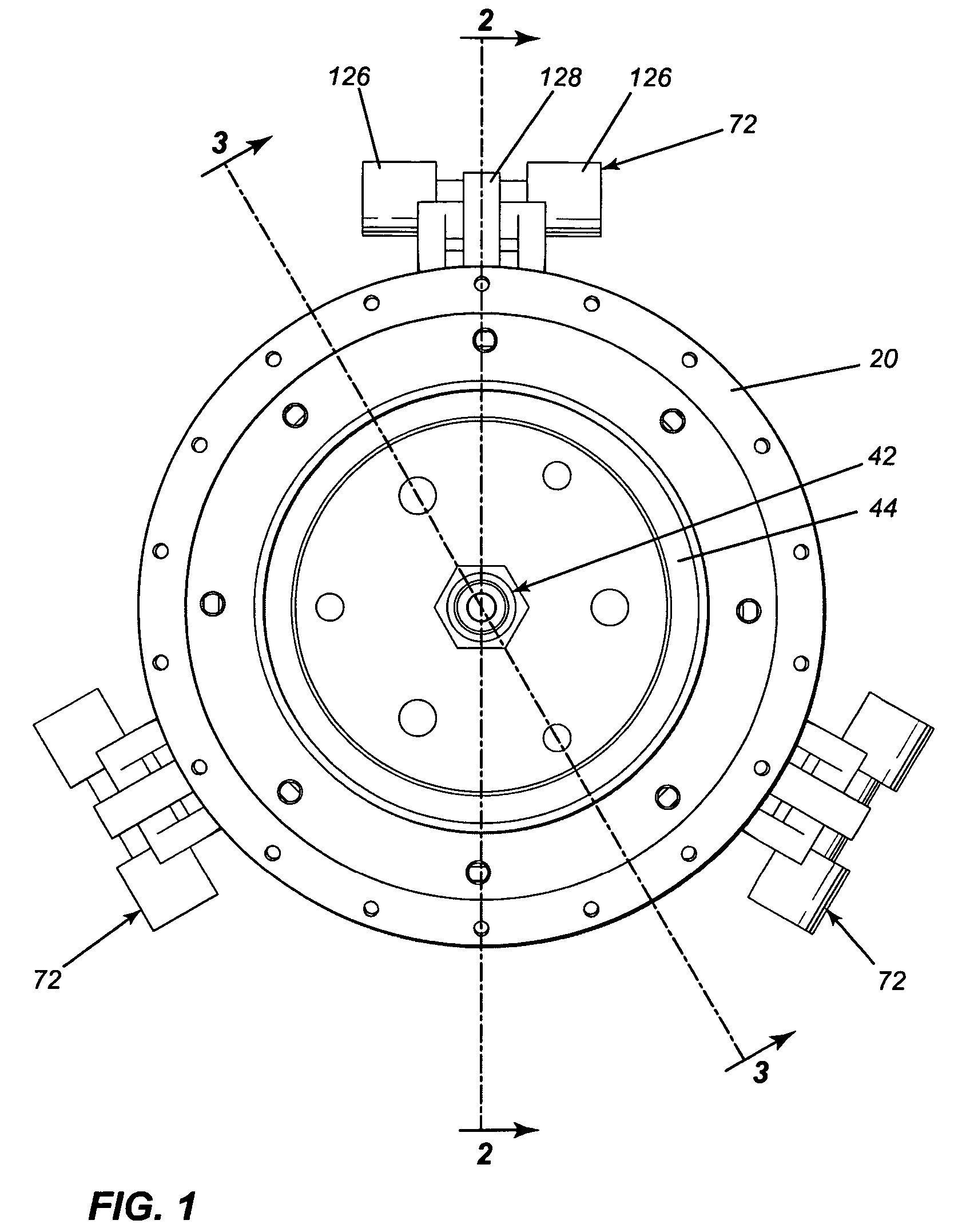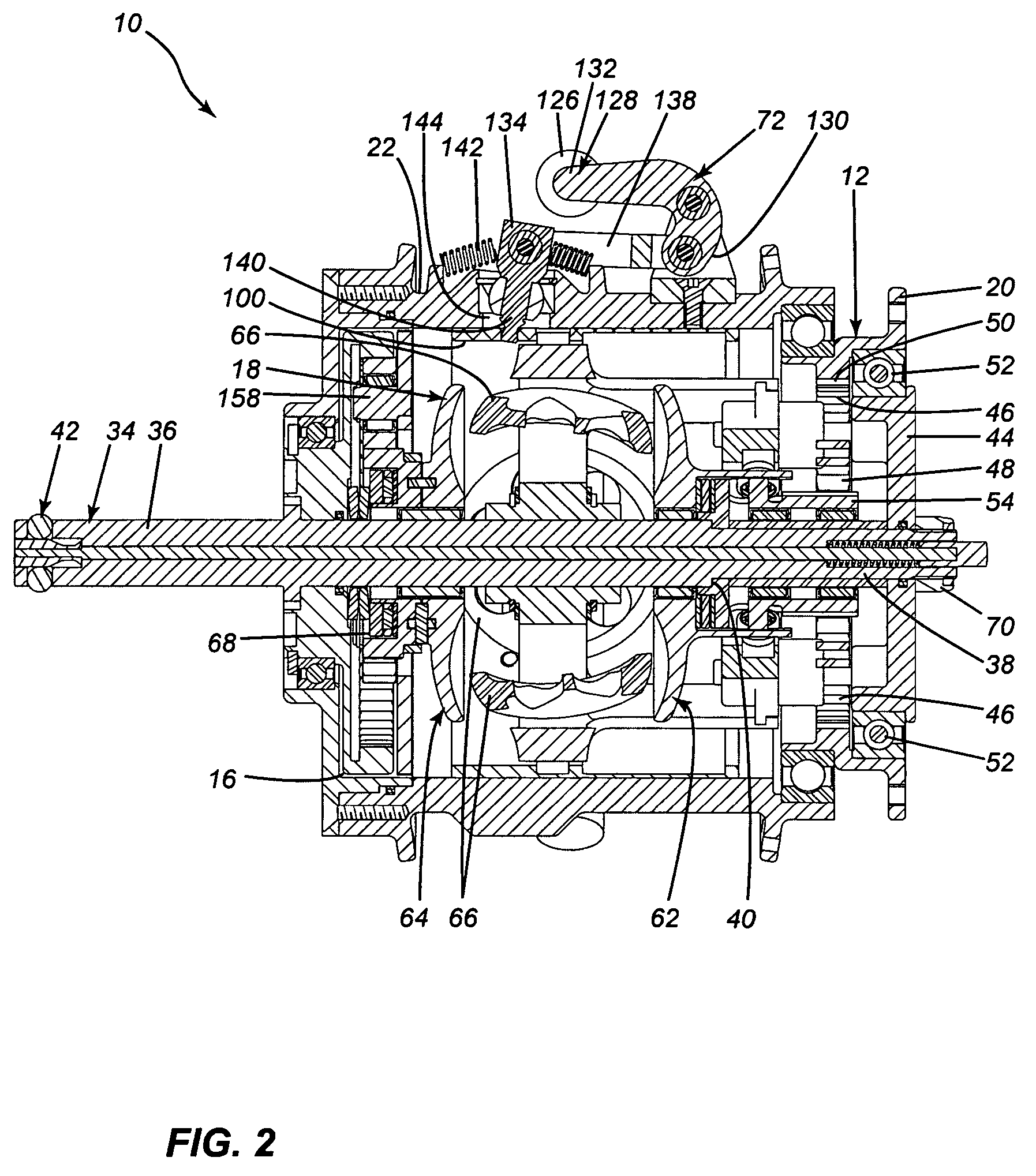Continuously variable transmission
a transmission and continuous technology, applied in the direction of friction gearings, gearing elements, engine controllers, etc., can solve the problems of inability to meet the intended use of the intended use of the intended use of the intended use of the intended use, the proposed continuously variable transmission (cvt) is typically too heavy and inefficient, and the proposed device for reducing the dead spot is relatively inefficient and typically falls into disuse. , to achieve the effect of low cost and relatively compact transmission
- Summary
- Abstract
- Description
- Claims
- Application Information
AI Technical Summary
Benefits of technology
Problems solved by technology
Method used
Image
Examples
Embodiment Construction
[0042]FIG. 4 illustrates a variable ratio transmission 10 for receiving an input rotational motion having an input speed and a corresponding input torque, and for providing an output rotational motion having an output speed and a corresponding output torque. The variable ratio transmission 10 includes an input stage 12 receiving the input rotational motion. The variable ratio transmission 10 also includes an intermediate stage 14 including a variable ratio transmission assembly 18, the intermediate stage 14 being mechanically coupled to the input stage 12. The variable ratio transmission 10 further includes an output stage 16 mechanically coupled to the intermediate stage 14. The output stage 16 provides the output rotational motion.
[0043]The variable ratio transmission 10 mechanically couples an input member 20 of the input stage 14 to an output member 22 of the output stage 16 and allows the conversion of an input rotational motion of the input member 20 into an output rotational ...
PUM
 Login to View More
Login to View More Abstract
Description
Claims
Application Information
 Login to View More
Login to View More - R&D
- Intellectual Property
- Life Sciences
- Materials
- Tech Scout
- Unparalleled Data Quality
- Higher Quality Content
- 60% Fewer Hallucinations
Browse by: Latest US Patents, China's latest patents, Technical Efficacy Thesaurus, Application Domain, Technology Topic, Popular Technical Reports.
© 2025 PatSnap. All rights reserved.Legal|Privacy policy|Modern Slavery Act Transparency Statement|Sitemap|About US| Contact US: help@patsnap.com



